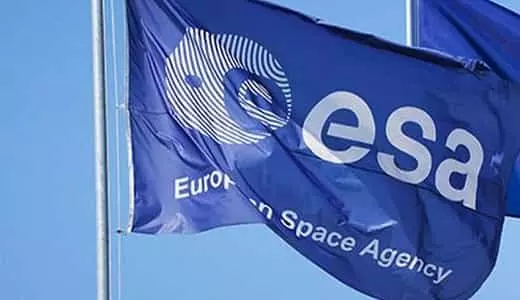Technology is described as the use of scientific information to practical ends of human life, like the creation of goods & services or the fulfillment of objectives. Some examples of techniques, skills, procedures, and processes that fall under the umbrella of technology include: Through the application of scientific findings to the economics, communication, medicine, and other sectors, it is transforming the experience of being human. Globalization is vital to innovation.
A significant portion of the world is making rapid advancements, yet several countries are light years ahead of the rest. These nations work to provide a better standard of living for their citizens through enhancing transportation, healthcare, and environmental protection, among other things. Each year, the BIC compiles a list of the top 60 countries in the world based on a wide range of criteria. Investments in research and development manufacturing capabilities, and the presence of high-tech public enterprises are some of the factors that make up the criteria.
In the context of the modern world, technology constitutes an essential part of everyday life. Every nation works hard to advance the state of its technological development.
List of Top Countries with Advanced Space Technology
1. USA
The United States’ (NASA) is far and away the most active and productive space agency on the planet, with a budget that is almost double that of the next-largest agency. NASA’s efforts helped make the United States the second nation to launch humans into space, the first to set foot on the moon, and a significant contributor to the Space Station. The space shuttle program, the Voyager & Mariner probes, as well as the Curiosity and Perseverance rovers on Mars are also notable NASA accomplishments.
The Apollo program, which included missions 17, 16, 15, 14, 12, and 11, is likely NASA’s most well-known endeavor, as it cost $20.4 billion and resulted in six occasions on which humans walked on the moon. Although NASA has accomplished a lot, it has also had its fair number of unsuccessful missions, a few of which ended tragically.
As an illustration, when an oxygen cylinder exploded on Apollo 13, the mission had to be aborted. They were lucky enough to have a surviving crew. The space Shuttle Challenger exploded shortly after liftoff in January 1986 and the Space Shuttle Columbia also disintegrated during re-entry in February 2003. All 7 astronauts on board perished in both incidents.
2. Russia
For the better part of seventy years, Russia has used two separate space agencies. Before the collapse of Soviet Union in 1991, the Kosmicheskaya program SSSR had been in operation since 1955. Russia, with the help of the SSSR, was the first nation to execute a space mission and the first to send humans into space when cosmonaut Yuri Gagarin finished an orbit around Earth dated 12 April 1961, weeks before the United States sent astronaut Alan Shepard into space on 5 May of that year.
3. China
The (CNSA) and the (CMSA) are two sibling organizations that work together to run China’s space program (CMSA). After the USA and Russia, China is the 3 country to independently launch humans into space. The first Chinese communication satellites, Dong Fang Hong I, were successfully launched in 1970.
At the moment, China is the world’s third-largest space power. China’s Chang’e 4 mission touched down on the moon’s far side in 2019. The CNSA’s Tianwen-1 mission successfully landed a probe on the surface of Mars in May 2021, making China the 2nd nation to do it. Additionally, China has a military space force called as the (PLASSF). In 2022, China became the first country to land a rover on the far side of the moon. China is also developing its own space station, which is scheduled to be completed in 2023.
4. European space agency countries
This ESA includes countries like Austria, Germany, Norway, Canada, and many others.
The (ESA) is an international organization with 22 member states and several associate members and cooperation partners. It is headquartered in Paris, France but also has regional and international offices all over the world, notably in the United States and Russia.
The European Space Agency (ESA) has a 2021 operating budget of €6.49 billion ($6.62 billion USD) and focuses on four primary areas: science and exploration (to learn more about the cosmos), space safety (to safeguard Earth and space-based life and infrastructure), applications (to find useful ways to put space technology to use), and enabling and support.
5. Japan
The Japanese space program is among the best in the world. In 2003, Japan’s Institute of Space as well as Astronautical Science (ISAS), the (NAL), and the National Space Development Agency of Japan merged to form the (JAXA), which is responsible for the country’s national aerospace activities for research and development (NASDA).
In February 1970, Japan became just the fourth country in the world with the ability to launch its own satellites when it sent Osumi into orbit. It currently maintains a constellation of satellites for use in meteorology, communications, astronomy, and earth observation.
6. India
The Government of India’s Department of Space funds the ISRO Organization, which conducts space-related and allied scientific research. The institution has helped India a frontrunner in space-related R&D, as it is one of just a few of organizations with the ability to launch satellite and extraterrestrial missions.
The Soviet Union launched India’s initial satellite, Aryabhata, in 1975, while India successfully launched its first satellite into orbit on its own in 1980. India has since established one of the biggest fleets of navigation satellites and sent missions to the moon and Mars. India is also developing its own cryogenic engine, which is a key technology for launching heavy satellites into space. Recently India launched Chandrayaan-3 on July 14, 2023 that touched down near the Lunar south pole on August 23, 2023.
7. Singapore
This nation has successfully positioned itself to take the lead in terms of technical innovation in Southeast Asian region. Because venture capitalists consistently put money into new businesses that are just getting started, the country’s technological and scientific sectors are booming.
Additionally, Singaporeans take advantage of the fastest average connection speeds in the world, giving them with a considerable competitive advantage. The technology centre of this country pulls together scientists, businesspeople, and the environment to produce mind-blowing innovations that are effective, collaborative, and result from working together.
When compared to other countries, it has the most advanced technology. The technology it creates is great in and of itself. As an example, while the idea of autonomous vehicles has existed for some time, Singapore has been the first nation to put it into practice.
8. Italy
Agenzia Spaziale Italiana is Italy’s national space agency and is responsible for the country’s space program. It works in tandem with a wide variety of other space agencies, including the European Space Agency (ESA) and this Italian Aerospace Research Centre.
It has participated in the Cassini-Huygens project to Saturn (a collaboration between NASA, the European Space Agency, and the Italian Space Agency), the ESA’s Mars Express & Venus Express missions, as well as the 2014 Rosetta comet landing project.
9. France
France has its own space program, the Center for Space Studies in addition to being home to the European Space Company’s global headquarters (CNES). CNES is one of the biggest national space agencies in Europe and the third-oldest in the world, after NASA & Russia’s SSSR/ROSCOSMOS. CNES is now collaborating with the German Space Agency, DLR, to create a reusable launch vehicle that runs on liquid oxygen and methane. The five pillars on which the CNES rests are access to space, civilian uses of space, environmental sustainability, scientific and technological research, & security and defense.
10. Ukraine
Since Ukraine, like Russia, is a former Soviet Republic, it inherited much of the Soviet Union’s space program after the fall of the Soviet Union in 1991. Ukraine’s current space agency, the State Space Program of Ukraine (SSAU), was first established in 1992 under the name (NSAU), before officially changing its name in Dec 2010.
Ukraine made many missiles for the Soviet Union, but it has no rocket launch sites of its own. Before Russia’s invasion of Ukraine in 2022, the country used Russian launch sites from 1992 to 2014, but such cooperation ended after Russia annexed Crimea in 2014. NASA and the European Space Agency are just two of the organizations that the SSAU now works with as partners.
Final thoughts
The capabilities of different space agencies are vastly different. Midway through the year 2022, just 16 of the world’s 70+ space organizations were capable of launching a probe into space, and only 7 could send a probe to an extraterrestrial destination like the moon, Mars, and deep space.
It is believed that just three of those are capable of sending humans into space. NASA successfully landed humans on the moon on six separate occasions between 1969 and 1972, making the United States the only country to accomplish this achievement to date.
Advanced Space Technology FAQs
Q1. How Is A Country’s Advancement In Space Technology Measured?
Ans: When it comes to sizing up a country’s strides in space technology, there’s more to it than meets the eye. We’re talking about things like the number of successful space missions, cutting-edge technologies they’ve come up with, and their scientific research contributions. And it’s not just about satellite launches, manned space missions, and deep-space exploration either, we also need to look at well-funded, robust space agencies and collaborations with other nations and the private sector.
Q2. What Benefits Do Countries Gain From Investing In Advanced Space Technology?
Ans: Pouring resources into advanced space technology can really pay off for countries. For starters, it helps create jobs, sparks innovation, and paves the way for new industries to sprout up. But wait, there’s more! Think about enhanced communication and connectivity, environmental monitoring, national security, and, of course, scientific research and discovery. So yeah, investing in space technology is definitely a win-win situation.
Q3. How Do International Collaborations Influence Advancements In Space Technology?
Ans: When countries come together, the sky’s the limit when it comes to advancing space technology. By pooling resources, expertise, and funding, they can tackle bigger projects and navigate through technological challenges like a hot knife through butter. Plus, collaborations encourage knowledge exchange and create a global scientific community, which can lead to all sorts of new discoveries and innovations in space technology.
Q4. What Role Does The Private Sector Play In The Development Of Advanced Space Technology?
Ans: Companies like SpaceX, Blue Origin, and Virgin Galactic are shaking things up with their groundbreaking tech and cost-effective solutions. By pouring money into R&D, these private players are driving space commercialization and opening up access to space technology for countries all over the globe. And you know what? This private sector involvement also spurs competition, which can translate into faster tech advancements and cheaper space missions. So yeah, the private sector is kind of a big deal in space tech development.

























